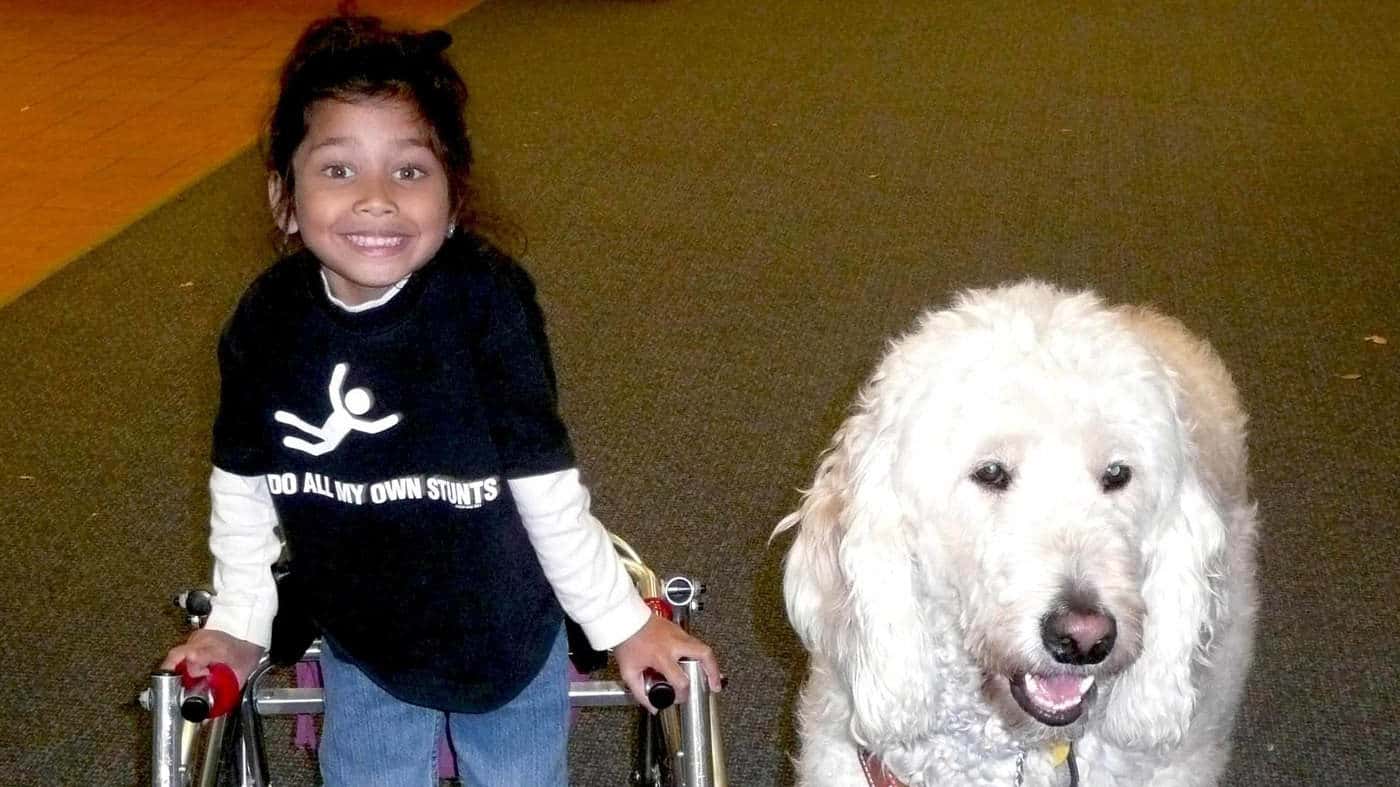The United States Supreme Court just heard its first case about service animals in schools, Fry v. Napoleon Community School District. The issue in the case is whether Elhena Fry was required to enforce her right to use a service animal in school by going through the special education dispute resolution system, or if she could go straight to state or federal court with her case. Admittedly, this issue is arcane and technical, but it sorely needs a resolution. There have been many cases where students were unnecessarily separated from their service animals while advocates argued over which court system should hear their cases.
The right of students with disabilities to use service animals in school facilities derives from the Rehabilitation Act of 1973 and the Americans with Disabilities Act of 1990 (ADA). These laws ensure that people with disabilities who have service animals enjoy equal access to publicly-funded facilities, services, and places of public accommodation. These categories include public and private schools.
Service animals are dogs or miniature horses that have been individually trained to do work or perform tasks on behalf of a person with a disability. Only such trained animals fall within the protections of these laws. (The Rehabilitation Act does not have its own service animal definition and generally borrows its definition of “service animal” from the ADA.)
Covered entities, such as public and private schools, are required to accommodate a student’s use of a service animal unless the dog is out of control; is not housebroken; would cause a “fundamental alteration” of services, programs, or activities of the school; or poses a “direct threat.” (Similar rules exist for staff members with service animals.) Schools must meet an extremely high bar to establish that the presence of a service animal would constitute a fundamental alteration or direct threat.
The skirmish in the Fry case over which law and legal process applies arises out of the fact that students with disabilities have both distinct and overlapping rights under various laws.
For example, a student with a disability has the right to a free and appropriate public education under the Rehabilitation Act and the Individuals with Disabilities in Education Act (IDEA), and also has the right of equal access to education under the ADA.
In most situations, if a student asserts a right that derives from both the IDEA and the ADA, the courts will require the student to go through the special education process first. The administrative court may be able to resolve the case without need for further court action. However, if a student has claims under the ADA but not the IDEA, requiring the student to go through the special education process is a futile exercise that slows down the administration of justice.
Because of the lingering confusion over which court system should hear these cases, students have been unnecessarily separated from their service animals while the lawyers argue about the technicalities of legal proceedings.
The result in Elhena Fry’s case is expected to put an end to the confusion and give students and schools clear direction on the proper forum to resolve these cases.
The right of access for people accompanied by service animals was given considerable attention when the Department of Justice (DOJ) revised and updated the regulations implementing the ADA. The DOJ recognized that separating a person from his service animal for any period of time can be harmful for both. For example, a student whose service animal assists her with behavioral challenges may regress behaviorally without her service animal there to redirect her behavior or provide calming deep pressure therapy. Meanwhile, a highly trained service animal is sitting at home with limited opportunity to practice and perform its learned skills and tasks, which may lessen in quality and effectiveness.
In recent years, the DOJ and the Office of Civil Rights at the federal Department of Education have resolved numerous cases regarding service animals in schools. These agencies have made it clear that schools (public, private, residential, etc.) cannot require students to provide a release for the school to speak with a student’s healthcare provider(s), documentation of the service animal’s training or certification, or proof of liability insurance. In addition, a school cannot require the student’s parent sign an agreement to indemnify (hold harmless) the school as a condition of having a service animal in the classroom.
Today, service animals in classrooms are so prevalent that school administrators have peers and colleagues with whom they can consult about how to integrate service animals into all aspects of the school day. They also have access to a multitude of sample policies and procedures to ensure that they properly handle a student’s request to have a service animal in school. However, we know that students with service animals continue to be denied access.
If you become aware of a student with a service animal (including a post-secondary student) who has been denied access to the full educational experience because of his service animal, please encourage them to contact Disability Rights NC.
Recommended reading



